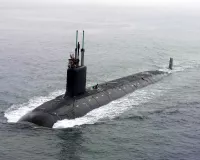A navy is a branch of a nation's armed forces primarily responsible for conducting military operations on water. This encompasses various combat operations on lakes, rivers, coastlines, and oceans. The navy's activities include surface warfare, amphibious operations, submarine warfare, and naval aviation. It also involves supporting roles such as communication, training, and logistical support. In essence, a navy is a comprehensive maritime force designed to protect a nation's interests and project power through naval capabilities.
1906: United Kingdom launched HMS Dreadnought
In 1906, the United Kingdom launched HMS Dreadnought, marking a further step change in naval firepower, though naval tactics still emphasized the line of battle.
1940: Taranto attack demonstrates Aircraft Carrier Power
In 1940, at Taranto, the aircraft carrier demonstrated its ability to strike decisively at enemy ships out of sight and range of surface vessels, marking a major paradigm shift in naval warfare.
1941: Pearl Harbor attack demonstrates Aircraft Carrier Power
In 1941, at Pearl Harbor, the carrier demonstrated its ability to strike decisively at enemy ships out of sight and range of surface vessels, marking a major paradigm shift in naval warfare.
1944: Battle of Leyte Gulf
In 1944, the Battle of Leyte Gulf occurred, arguably the largest naval battle in history and the last battle in which battleships played a significant role.
April 2010: U.S. Navy Lifts Ban on Female Sailors Serving on Submarines
In April 2010, the U.S. Navy lifted the ban on female sailors serving on board U.S. submarines, a change from the historical restrictions due to extended duty tours and close conditions.
Mentioned in this timeline

A submarine is a watercraft capable of independent operation underwater...
Australia officially the Commonwealth of Australia encompasses the Australian mainland...
Canada is a North American country the second largest in...
Spain officially the Kingdom of Spain is located in Southern...

Pearl Harbor is a lagoon harbor on Oahu Hawaii that...
The letter S in both uppercase and lowercase forms is...
Trending

2 months ago Gwyneth Paltrow on Timothée Chalamet and Kylie Jenner's Relationship: 'Punk Rock'

Lisa Rinna is an American actress television personality and model known for her roles on soap operas like Days of...
8 months ago Barcelona and Real Madrid to Clash in Copa del Rey Final El Clasico.

5 months ago Student Loan Repayment Troubles: 460K Denied, Backlog Alarms, Forgiveness Halted.

Amy Winehouse - was a highly acclaimed English singer and songwriter celebrated for her distinctive contralto voice and genre-bending music...

8 months ago Dyson Daniels Wins 2024-25 NBA Most Improved Player; Zubac, Cunningham Runners-Up
Popular

Candace Owens is an American conservative political commentator and author...

Ilhan Omar is an American politician currently serving as the...

XXXTentacion born Jahseh Dwayne Ricardo Onfroy was a controversial yet...

Frederick Christ Trump Sr - was an American real estate...

Charles James Charlie Kirk was a prominent American right-wing political...

Cristiano Ronaldo often nicknamed CR is a Portuguese professional footballer...